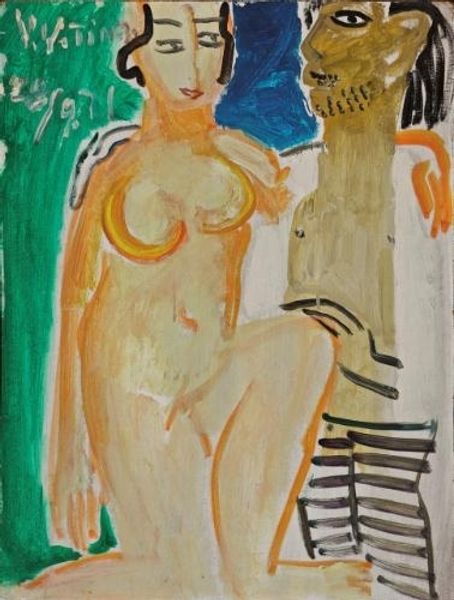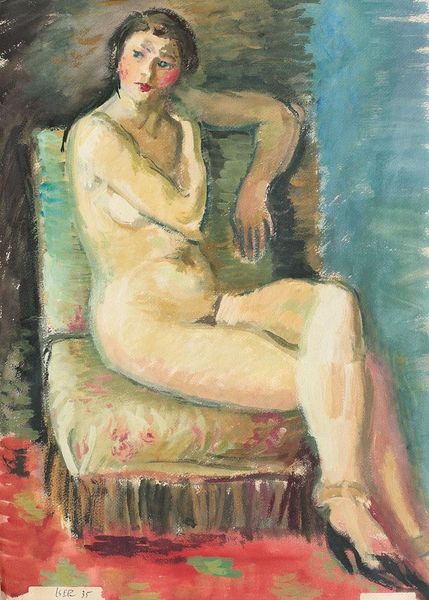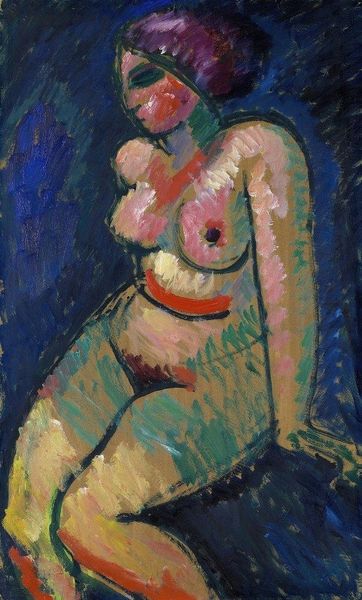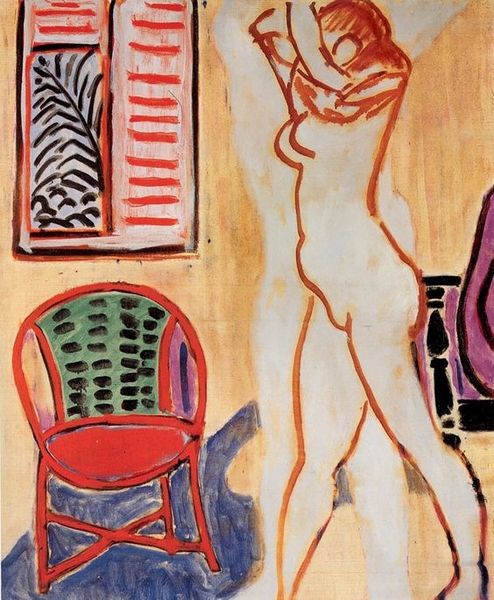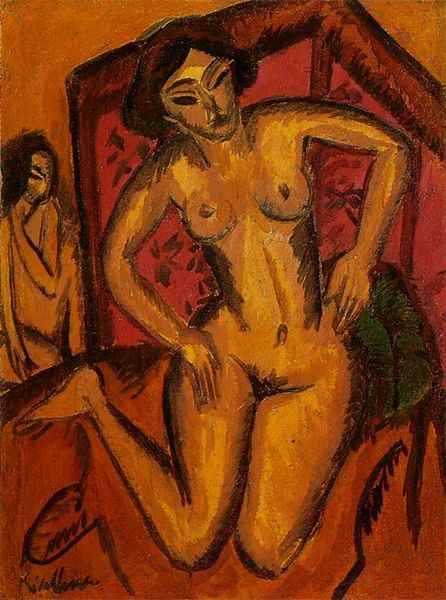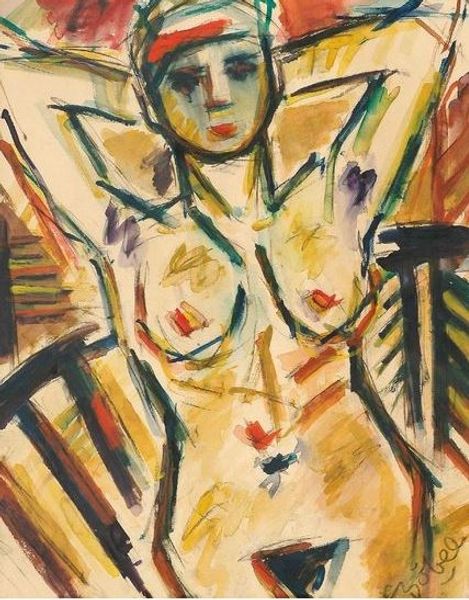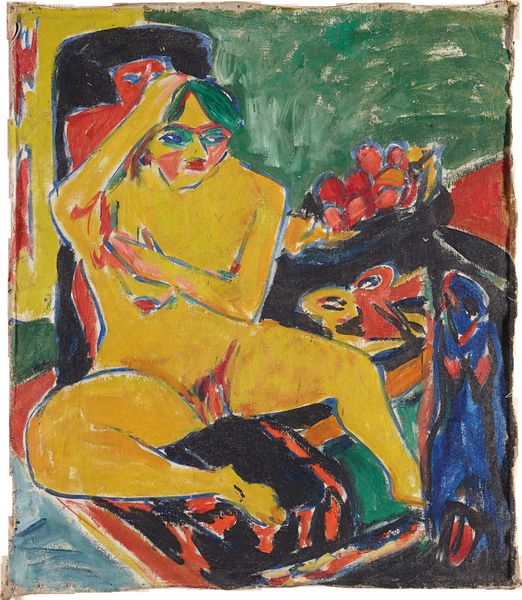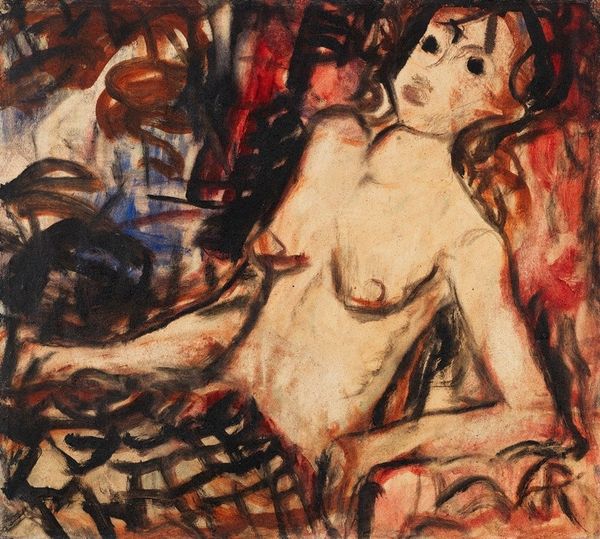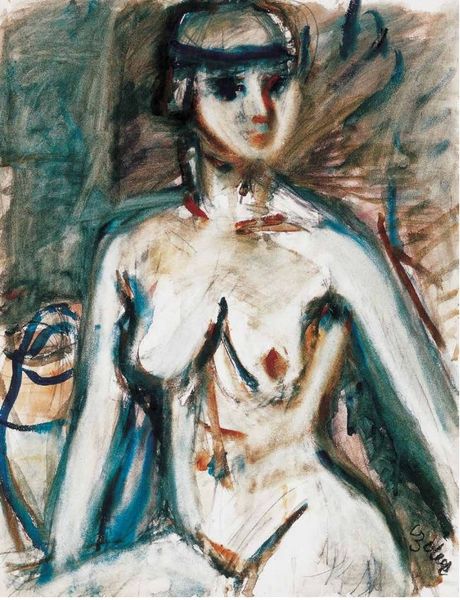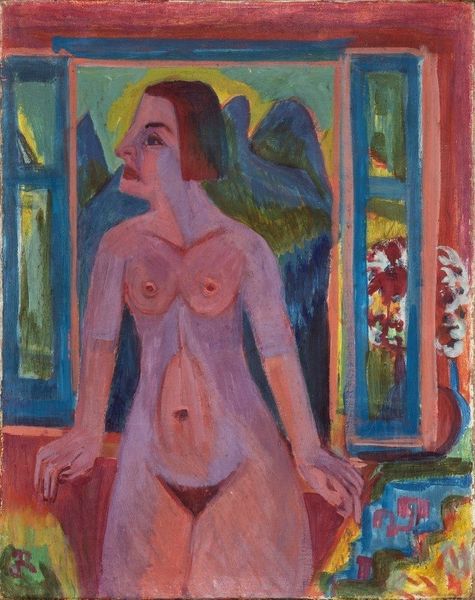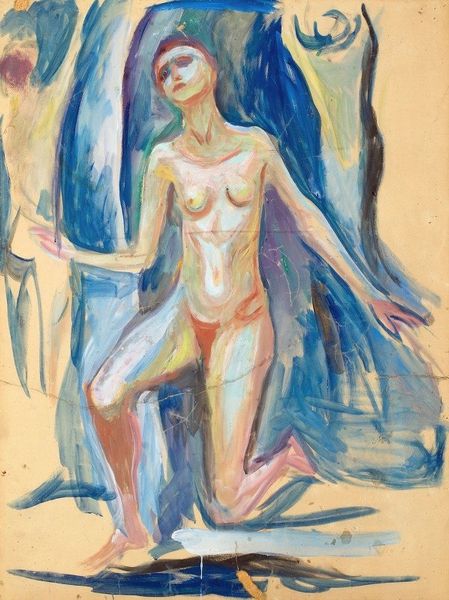
Copyright: Public Domain: Artvee
Curator: Edvard Munch’s 1932 oil painting, "Girl from Nordland," offers us a captivating yet unsettling portrayal. What’s your initial impression? Editor: It strikes me as surprisingly intimate and a little voyeuristic, perhaps even exploitative. The model's vacant stare is almost painful, heightened by the bold brushstrokes, lending a sense of vulnerability that's very visceral. Curator: Absolutely, and those stark, contrasting colors only reinforce that tension. The ochre tones of the figure's skin juxtaposed against the cool blues and reds of the chair and background. Structurally, consider the geometry—the planar arrangement of background shapes and their defiance of spatial illusion—in terms of formalism's emphasis on abstract composition. The model sits imposingly over an amorphous and unresolved area, which offers stark contrast between solidity and emptiness. Editor: It's not merely about formal composition; let's delve into its historical context. Given Munch’s other work, which explores themes of psychological distress, death, and female sexuality, one wonders what this painting aimed to convey about female experience in early 20th century Norway. Is it an honest observation, or does it perpetuate a specific male gaze? Curator: Certainly, interpretations shift. If we view the artwork using structuralist models, for example, where oppositions of meaning generate a total discourse, the 'nordic' in this ‘Girl from Nordland’ implies cultural values associated with race, identity, and cultural purity during that era. Munch then sets her stark nudity in direct contrast to a seemingly demure ideal. This kind of decoding provides layers of interpretation based strictly on form, material, technique, and style. Editor: While understanding semiotics can enrich our perception, ignoring historical dynamics and lived experiences impoverishes our knowledge of its implications for modern conversations around sexuality and race, as well as power and gender. Curator: These types of analyses provide different perspectives on Munch's choice of form and material; different lenses on his choice of theme. Editor: Agreed. This exchange underlines art's inherent ambiguity and the responsibility we carry in critically viewing, understanding, and historicizing art. Curator: Yes, it reveals the endless potential of art's complex interplay of structure, context, intention, and ultimately, reception.
Comments
No comments
Be the first to comment and join the conversation on the ultimate creative platform.
